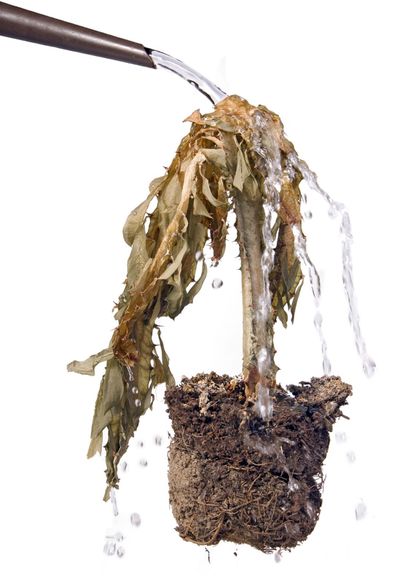Risks of Under Watering Plants
The ultimate risk of too little water for a plant is death. Like animals, plants need water to function to thrive, and to live. Some of the most important reasons plants need water include:
Maintaining rigidity and the ability to stay upright Engaging in photosynthesis to create energy and food Moving nutrients from the soil up the stem
Several factors determine how much you need to water plants, including the plant type, the climate, soil conditions, weather, and location.
Signs Plants Have Too Little Water
It may take some trial and error to figure out how much to water houseplants or garden plants. As you work out the right amount and frequency of watering, use these clues to determine if you are under watering:
Wilting. This is the classic sign of an under watered plant. Too little water causes a plant to lose turgor, the rigidity in cells and tissues. There are some diseases that can trigger wilting, but the easiest and most likely explanation is under watering. Dry soil. If the soil around a plant is dry, it may need more water. Exceptions to this are some succulents, like cacti, which don’t need much water because they can store it so well. Dry, dead leaf tips. When a plant doesn’t get enough water, the tips and edges of leaves dry out and turn brown. Ultimately, entire leaves will brown and die. Slow growth. If you are chronically under watering a plant, but still giving it enough water to survive, growth will be slower than normal or expected. New growth, such as leaves, may be small. Visible footprints. For a sign that turf grass is not getting adequate water, look to your footprints. After you step on the grass, it should bounce back quickly. If the footprints remain visible for several minutes, the grass is too dry.
If you suspect signs in your plants indicate under watering, you can confirm it by watering them. They should revive, and if they do not, there could be another issue, such as a viral infection or fungal disease.
